A brief digression on Merchant Marks
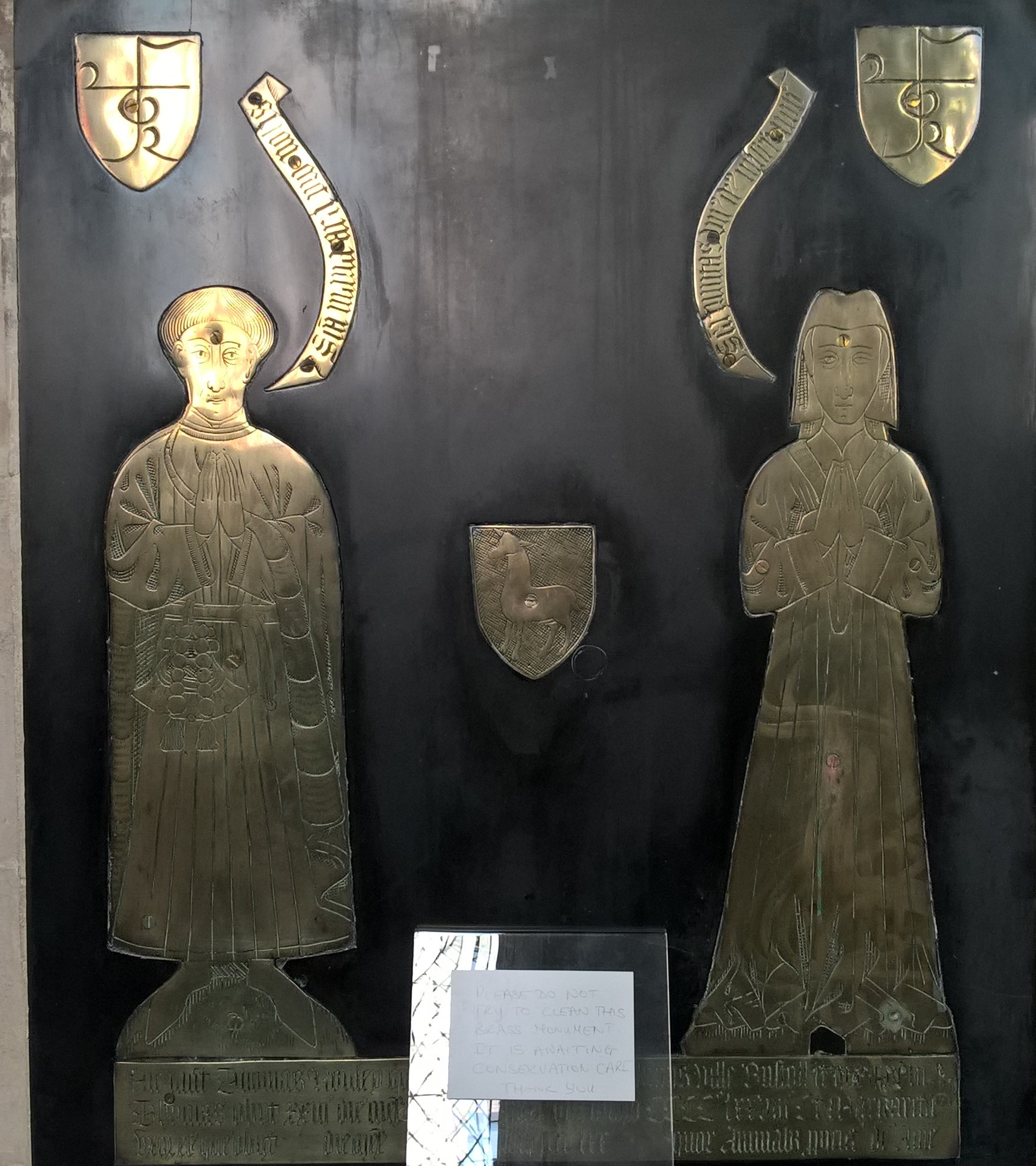
As part of my lockdown activities (because there are very few locked buildings you can attempt to record from the outside) I took time to catch up on my reading for several historic periods where I felt my knowledge was thin.
Immersed in the 18th century and the Exeter wool trade (fabulous, expensive, high quality; failed through lack of business skills) I came across the recently published Exeter Cloth Dispatch Book. This volume, which consists partly of a series of essays on the wool trade in Devon in the 1760s, contains a facsimile of a recently discovered manuscript recording the exports of an Exeter cloth merchant. Alongside this is a further facsimile of a Bale book, recording cloth bale shipping details from a wharf manager at the port of Topsham around the same period.
Aside from the luscious colour plates of the cloth samples, there are facsimile details of a variety of transactions in both documents and peppered across them, scattered freely across all the pages, are a myriad little merchant marks.
I’ve spent a lot of time in old buildings and around churches and tombs. I spent half my working life in and around Bristol, a thoroughly mercantile city. I’d seen merchant marks carved on tombs and engraved on brasses; in places of prominence over doorways and occasionally on the earthenware belonging to merchant households. Sometimes almost casually drawn, an offhand graffito tagging of a bit of property. Sometimes aggrandised within a pseudo-heraldic shield. What I had not seen or understood was the ubiquity, and the longevity, of the marks in the everyday life of merchants and traders, and looking further, the ubiquity of the ‘personal mark’ across society. These marks were in regular use as a commercial shorthand for hundreds of years. That used by the East India company was in use from 1600 to 1874. Taylor’s still use their 1692 mark on their bottles of port. Others have survived into the present day, incorporated in trademarks and at least one modern maker is still using one.

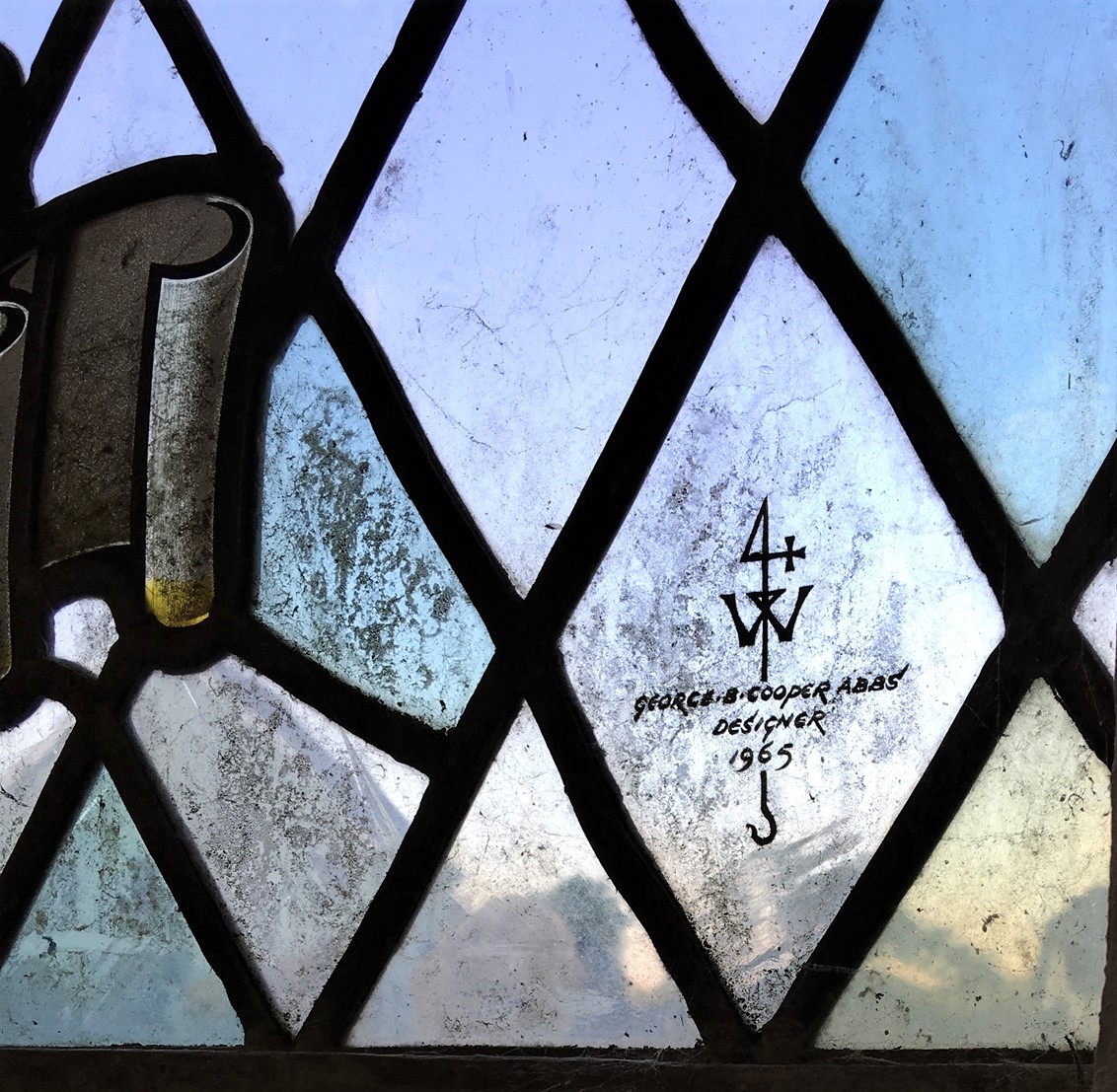
Merchant marks evolved logically, as a simple means of marking goods and property belonging to traders and merchants. By extension the personal mark was a more private, indeed personal, affair used by non-merchants. The effect is the same: a quick shorthand way of marking items with an easily recognisable symbol to enable swift identification: the precursor of the trademark or brand logo. The origins of the marks, as a class of artefact, are reputed to go back to the start of counting and literacy among humans. If you have goods and livestock you will at some point need to count them; you may at some point wish to trade them and you will almost certainly want to identify your items and animals among those of your neighbours.
The more immediate origins of the types of mark found in northern Europe are thought (though no-one seems to have done the research to prove it) to have evolved from apotropaic symbols used as house protection, especially in the area around the Baltic, where runes were often incorporated into the symbols. Each household had its own preferred sign, which came to be used as an identifier for that household. The wide reach of the Baltic trading network spread the practice further afield. The Baltic influence might certainly explain some of the runic-looking symbols found in UK areas where knowledge of runes might reasonably be expected to be low or even zero.
Other marks, using the heart and orb symbols, are thought by Frank Girling (1964), to have evolved in Italy and Spain. Some used an initial from the owner’s name. A figure resembling the number 4 was popular, its accurate meaning now lost, although it appears to have Christian connotations and may well have represented a triangle for the trinity.
From simple pieces of identification Merchant marks became subject to law from the medieval period. Marks were registered with the controlling trade guilds and statues periodically required marking of goods by their makers with their registered mark. Ownership of a mark was a serious part of business life. Hardly surprising that the proud but non-armigerous merchant sometimes placed his mark in a shield as if he were ennobled.
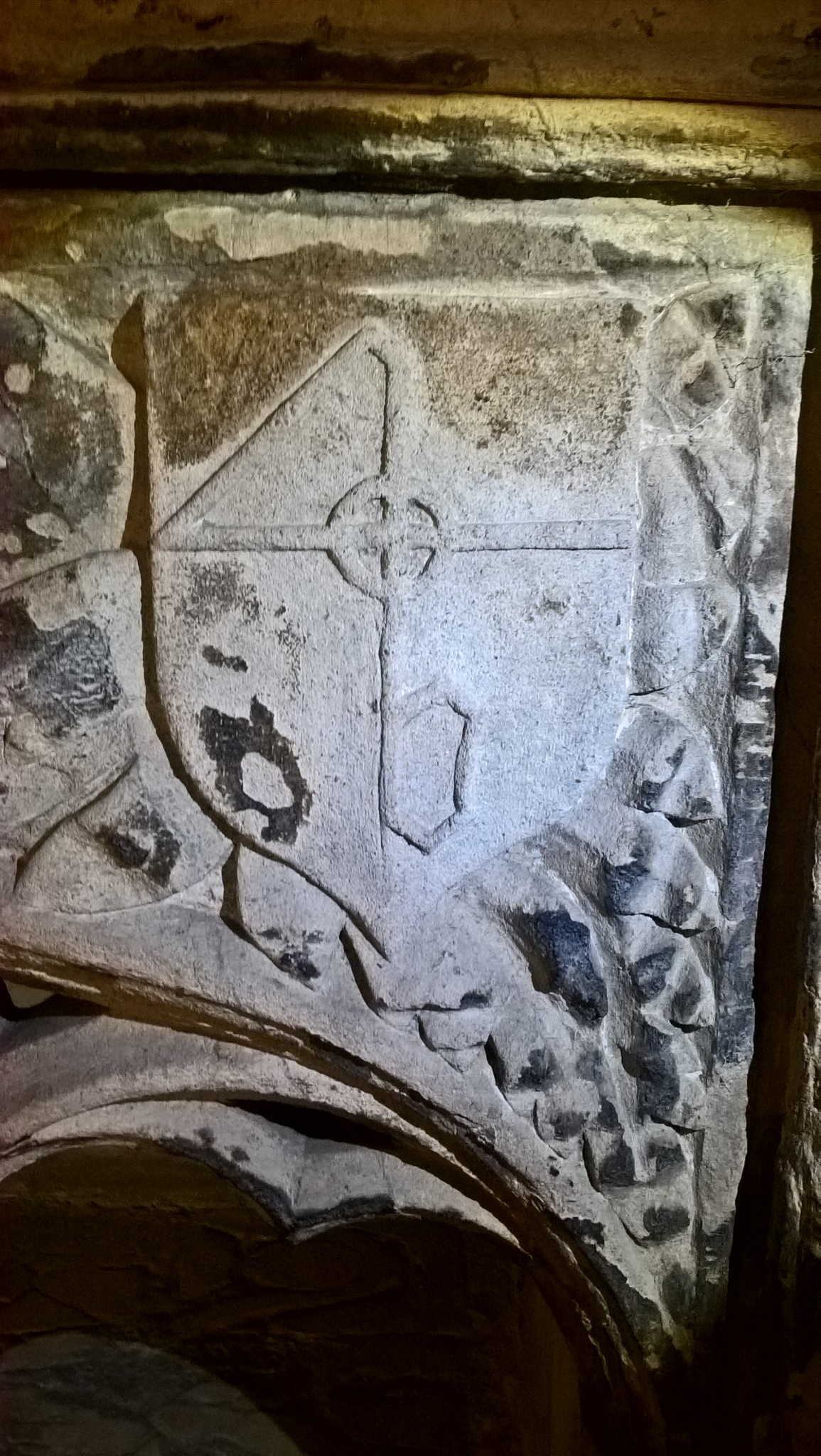
Taking a quick survey of the available academic journals (lockdown and COVID policies featuring heavily in access via traditional libraries, most of these were sourced online) it became apparent that, as with many slightly marginal areas of interest, there was a brief flurry of activity during the energetic founding days of most county historical and archaeological societies in the mid to late 19th century, and very little since.
Not surprisingly, the counties with the more active medieval and early modern sea ports generally provided the most extensive accounts. Bristol, which before the growth of Liverpool was the second largest port in England, was well represented as was its upriver neighbour Gloucester. The Norfolk merchants, again a force to be reckoned with in the medieval period, were similarly well documented.
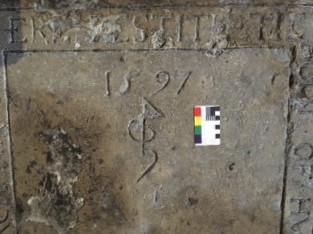
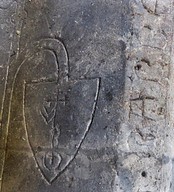
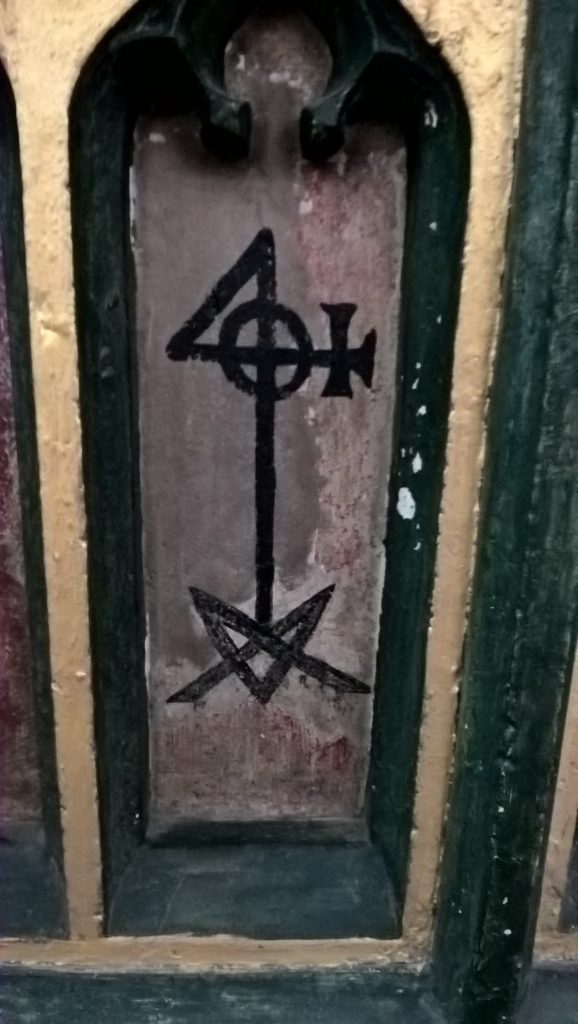
Into the 20th century, interest in the marks appears to have been sporadic, but improvements in illustration technology did allow for extensive black and white drawings. Alfred Hudd, writing for the Clifton Antiquaries Club in 1912 provided a huge catalogue of marks, collected from a wide variety of sources local to Bristol: ‘tomb stones; stained glass; on merchant houses; on portraits; on books; on signet rings and wax seals; from drawings of marks since destroyed; on silver plate; makers marks on pottery and written in ink on church books and on deeds’.
Another huge catalogue of marks, extracted from publications across the whole country, and indexed to their owners, was compiled between 1953 and 1957 by Edward Mars Elmhirst, and this was followed in 1964 by English Merchant Marks by F.A Girling. This is described as ‘A field survey of marks’ and remains the best reference book on the subject.
The most recent publication, from 2020, is a description of marks used as indication of book ownership: ‘Early modern merchant’s marks in medieval English Manuscripts’ by Thomas Kittel, published in Renaissance Studies. Kittel’s early comment that ‘they [merchant marks] have rarely been discussed by art historians. This situation is mirrored in medieval and early modern bibliographical studies…’ seems to bear out the thin information available in general, which has relied on cataloguing surviving marks and periodically identifying the owners.
Throughout the publications there was little data from sources other than those carved in stone or cast in metal. Seals on old documents, and the more important documents themselves provided a further source. It seemed that the hard archaeological traces survived, but seldom the lesser paper records of everyday events, and certainly not the wrappers, casks and tags of traded and consumed goods. As John Webb, writing in 1990 for the Suffolk Institute of Archaeology & History noted: ‘Despite its importance in the economic history of early modern Suffolk, the woollen industry has left behind surprisingly few detailed business records; the financial papers of the master clothiers have long since all but disappeared, and the account books of those merchants who bought and exported local textiles have survived in only a few cases.’ A situation which appears from initial crude research to be replicated across the country. (And incidentally making the Exeter volume an especially valuable discovery). In combination with the lack of research into the topic this means that the extent of the everyday use and circulation of these and similar personal marks will have been seriously underestimated.
For the graffiti hunter, contemplating another mysterious mark with no obvious apotropaic meaning, the likelihood that it is simply a personal mark, with no further complications, needs to be considered. Even the mark of known merchanst, scratched on a wall, out of reasonable context as an identifier of tomb or household property, may still be just that. The fact that, until the Victorians got to work on them, the majority of church interiors will have been plastered should also be borne in mind. How simple would it be to scratch a mark into a plaster surface, tagging the building as effectively as a 21st century motorway bridge?
The marks left in stone, as we know, are the survivors and not the majority. If the intent was mischief rather than magic a depth of carving would surely be unnecessary labour. This is not to say that the marks do not contain apotropaic images; nor does it deny that the intent of the person making the mark may have been magical. It is simply that the use of the marks seems, from the tiny surviving evidence, to have been so very widespread among the litter of commerce that using them for casual tagging, rather than magical purposes, may have been normal.
For the graffiti hunter interested in pursuing and identifying the personal and merchant mark I recommend searching the records and proceedings of your local and adjoining county history and archaeology societies. Some have nothing, others, such as Bristol, have an entire publication devoted to the subject.
Article by Rebecca Ireland
Search terms: Merchant, Marks, Apotropaic, runes, protective, symbol, magic
References:
English Merchant Marks, by F.A. Girling. OUP 1964.
A now elderly, but nevertheless well-constructed and well-illustrated guide to marks across the UK. Frank Girling also published articles on Merchant marks in Country Life. The earlier publication, with which it can be used in tandem, is:
Merchant Marks, by Edward Mars Elmhirst. Harleian Society, vol. 108, 1956 (although Elmhirst dates his work 1957).
The Exeter Cloth Dispatch Book, edited by Todd Gray, Devon and Cornwall Record Society, new series, Vol. 63. Boydell Press 2021.
An Ipswich Merchant’s Cloth Accounts, 1623-24. John Webb, M.A., F.R.HIST.S. Proceedings of the Suffolk Institute of Archaeology & History Volume XXXVII, part 2 pp 124-133. 1990
Bristol Merchant Marks, reprinted from Proceedings of the Clifton Antiquarian Club, Vol VII part II. 1912
Early modern merchant’s marks in medieval English Manuscripts. Thomas Kittel. Renaissance Studies Vol. 34 No. 2 pp 208-227. April 2020.
Selective bibliography:
The Medieval Merchant’s Mark and Its Survival in Galway. Paul Walsh. Journal of the Galway Archaeological and Historical Society, 1993, Vol. 45 p. 1-28 Galway Archaeological & Historical Society, 1993.
Merchants’ Marks. Gloucestershire Notes & Queries, Vol.V, pp 107-9. 1891-1893.
Merchants’ Marks. Cecil T. Davis. Journal of the British Archaeological Association, First Series Volume 49, Issue 1, pp 45-54. 1893
Notices of the Norwich Merchant Marks, William C Ewing, Norfolk Archaeology, vol.3, pp 177-228 plus 11 plates. 1852.
Some Devonshire Merchant Marks, T.H Worth, Transactions of the Devonshire Association Vol 23, pp 315-317. 1891
